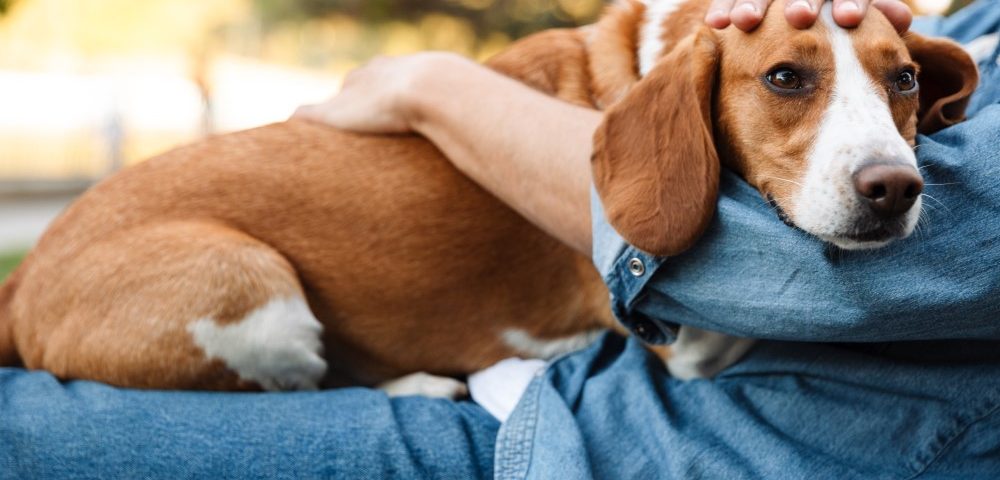
How Do Dogs Age?
July 30, 2020
Opting For Compassionate Pet Euthanasia at Home
August 17, 2020Neurological Disorders in Dogs can affect their brain, nervous system, and spinal cord. The disease will cause your pet’s behaviour and mobility to change suddenly, and these changes will be noticeable.
If you notice such changes, you should contact your vet immediately. Also, take note of when you first saw the symptoms and their frequency of occurrence.
Canine Neurological Disorder Signs & Symptoms
Identifying the signs and symptoms of canine neurological disorders is easy, as they are quite stark:
Stumbling or Loss of Balance
Your dog losing its balance or stumbling is a common symptom of a neurological problem.
Persistent Head Shaking
Your dog will shake its head to remove water from its ears, and this is normal behaviour. However, persistent head shaking for no apparent reason could be a sign of neurological issues.
Dragging Its Paws
Changes in the way your dog walks should raise alarm bells. Dogs dragging their paws because of a neurological disorder can lead to secondary symptoms of scrapes and wounds on their paws. If not treated, these sores can cause immobility for your dog.
Loss of Vision
One of the more severe symptoms is your dog losing its vision. If this happens, your pet will look clumsy and bump into the furniture. If you notice your dog becoming disoriented, contact your vet immediately.
Seizures
Seizures are typically a genetic condition. However, if your dog starts getting seizures, it could be a sign of a neurological disorder.
Pain
Your dog can experience pain from several of the symptoms of neurological disorders. If your pet is in pain, you will more than likely hear it whimpering and see it trembling or shaking uncontrollably.
Losing Its Appetite
With a neurological disorder, your dog will feel pretty rough, which could lead to a loss of appetite.
Common Neurological Disorders In Dogs
Different canine neurological disorders present in different ways, so there is no definite sign that your pet has a disease. All your dog can do is express its discomfort, and it is up to you, as its owner, to advocate for your pet.
Some common canine neurological disorders include:
- Cerebellar Degeneration
- Degenerative Myelopathy (DM)
- Epilepsy
- Vestibular Disease
- Inherited Polyneuropathy
- Intervertebral Disc Disease (IVDD)
- Parkinson’s Disease
- Wobblers Syndrome
All of these disorders present in a different way, and they all need different styles of treatment. If your dog is diagnosed with one of these conditions, your vet will develop an appropriate treatment.
Mobility Tools for Dogs with Neurological Disorders
Receiving a diagnosis of a neurological disorder will change your life and your dog’s. Restricted mobility is one of the most significant factors. However, there are plenty of tools that will help to minimise this symptom:
Pet Boots
A loss of stability and balance is one of the common symptoms of neurological disorders. Pet boots are designed to provide increased traction, and this will help your pet maintain their mobility by reducing slips and falls.
The boots are particularly useful if you have hard floors, as these surfaces can be a struggle for dogs with neurological disorders. They will help too with your dog’s dragging paws if this is something that your dog is doing.
Lifting Harnesses
During the early stages of neurological disorders, your pet’s symptoms might not be as severe. It may be the case that your pet just needs some help to get in and out of the car or other situations.
You can provide them with some assistance in this regard with a lifting harness. It is also useful for when your dog starts to lose their balance, as you can provide them with the help they need to get back on their feet after a slip.
There are quite a few different types of lifting harness available to help with your dog’s mobility issues:
Rear Support Leash. This harness is designed to slide easily into position while your dog is lying on its back. It allows you to provide some gentle support while your pet is urinating or defecating.
- Rear Lift Harness. These harnesses provide a significant degree of support, and they are incredibly simple to use.
- Combination Harnesses. If you have a larger breed of dog that is suffering from a neurological disorder. One significant benefit of these types of harnesses is that you can use the combination system, as the symptoms of your dog’s condition deteriorates.
Anti-Knuckling Socks
Your dog dragging its feet, known as knuckling, is a common symptom of many neurological disorders. To help with this, you can try putting on some anti-knuckling socks.
These will help correct the dragging feet and protect the knuckles from becoming grazed and cut. These socks are only a temporary measure to improve your dog’s gait, and should not be used all the time.
Dog Wheelchairs
At some stage of your dog’s neurological disorder, they are going to need a wheelchair. Using a doggy wheelchair will allow your pet to remain active through this challenging condition. You know that your dog is happiest when it is active, so resorting to a wheelchair for your dog on an as-needed basis is something to consider. If you get your dog used to the wheelchair while it is still relatively fit, the transition to using it full-time will not be as stressful, when that time comes.
Conclusion
Neurological disorder in dogs tend to be degenerative by nature, so your dog’s symptoms are only like;y to get worse with time. Discovering that your dog has such a condition can be devastating, particularly when it comes out of the blue. Your dog can live for many years with a neurological disorder, but the pain of watching your dog gradually degenerate can be heart-breaking.
As with most other canine medical conditions, identifying the disorder early and treating your dog as soon as possible is vital if you are to give a decent quality of life.
You might feel that you do not wish to make your pet go through the pain and discomfort associated with a neurological disorder and that euthanasia for your dog is the best option to avoid the suffering. If you do make this heart-breaking decision, you will receive all the help and support you need during this devastating period from our highly trained, fully qualified, and caring team of professionals.
We understand what a stressful time your dog’s end of life is, and we endeavour to give pets and their families the most peaceful goodbye.




